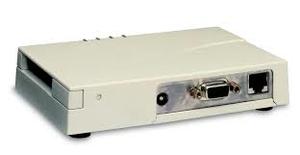LTSP | Wireless Access to LTSP
11 Jul 2008
The Issue
Currently the only method of accessing LTSP from a wireless device (e.g. laptop) is by running the local operating system and installing NoMachine on the client. It would be extremely useful to boot laptops directly into LTSP.
The Options
The following two pages would seem to outline the possibilities:
- http://www.ltsp.org/twiki/bin/view/Ltsp/WirelessLtsp
- http://www.ltsp.org/twiki/bin/view/Ltsp/WirelessLTSPClientsUsingAnEthernetBridge
I cannot help but conclude that, time being an important factor, the Ethernet Bridge option is the sensible course to take.
Proof of Concept
As it happened, I had an old Lucent Wireless Ethernet Converter, sadly only a 10-base-T model. I configured it with a static IP address, and attached it to my laptop’s network port. Rebooted my laptop and, joy of joys, it immediately PXE booted. Unfortunately it was painfully slow, so a better device is clearly required.
Possible Wireless Bridges
- ASUS WL330GE Wireless Access Point
- Linksys model number WET54G
- Belkin Wireless G Ethernet Adapter F5D7330uk
- Buffalo Wireless Ethernet Controller WLI-TX4-G54HP-1
After initially opting for the Belkin, I ended up opting for the Buffalo, largely off the back of some decent reviews.
Buffalo Wireless Ethernet Controller
My Buffalo Wireless Ethernet Controller WLI-TX4-G54HP-1 arrived today, so I eagerly installed it at home. As usual there is no configurator for Linux, so you have to use the web-admin page, this requires you to connect via a wired port configured for the same network 1.1.1.0/24. Once done it was very simple to configure - I gave it a static IP (not sure whether that was really required) and rebooted into Edubuntu.
Very straightforward, but the performance, whilst infinitely better than my old Lucent Ethernet Converter described in my Proof of Concept, was less than stunning. Launching Gcompris, struggled with the music, but once the music was switched off the moving images and sound seemed fine. Gnome seems a little sluggish at times, but probably quicker than my ageing Dell Inspiron 8200 is normally!
I guess I would describe performance of Edubuntu via Wireless as satisfactory - but if you require sound/video I think you’ll struggle. That said it is a useful additional method of accessing LTSP and will no doubt have its place at work, e.g. adhoc workstations.
References
- http://www.ltsp.org/twiki/bin/view/Ltsp/WirelessLtsp
- http://www.ltsp.org/twiki/bin/view/Ltsp/WirelessLTSPClientsUsingAnEthernetBridge
- http://www.lug-kr.de/wiki/ThinClientLokalBooten
- http://translate.google.co.uk/translate?u=http%3A%2F%2Fwww.lug-kr.de%2Fwiki%2FThinClientLokalBooten&sl=de&tl=en&hl=en&ie=UTF-8
